Famous worldwide for its white wine and extraordinarily beautiful cathedral, there is much more to the Umbrian town of Orvieto than meets the eye…
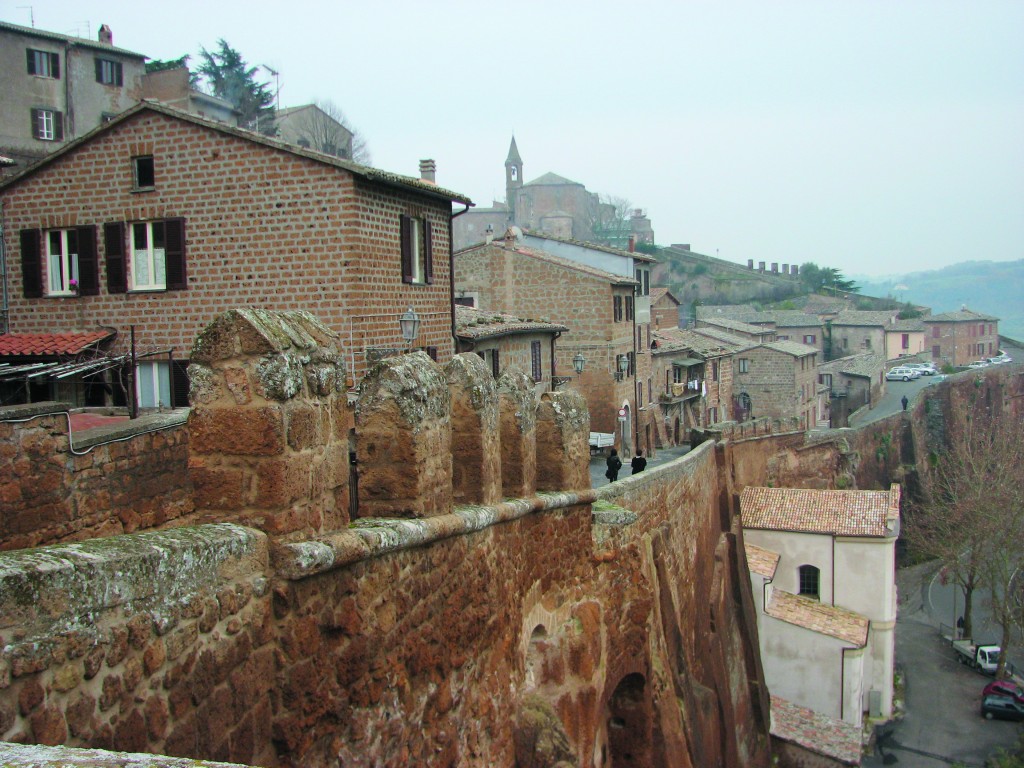
Any mention of Orvieto will probably bring to mind the popular white wine produced in the area – either that or the magnificence of the cathedral. Before my visit, that was just about all I knew of Orvieto – I certainly had a lot to find out.
Orvieto is set on a tall surge of rock flung here many millions of years ago by volcanic activity in the area. The unusual appearance and naturally strong defensive character of the spot drew Etruscan tribes, who settled in the 9th century BC, making it into one of the most important of the ancient civilisation’s 12 city states.
Much later on, Orvieto went high profile again, when medieval popes and cardinals would flee here to take advantage of the defensive position. Today, Orvieto is a town at ease, towering over the expanse of lush Umbrian countryside – and rather than relying on its steep rocky base for protection, it is doing its best to protect the rock itself and all that lies within.
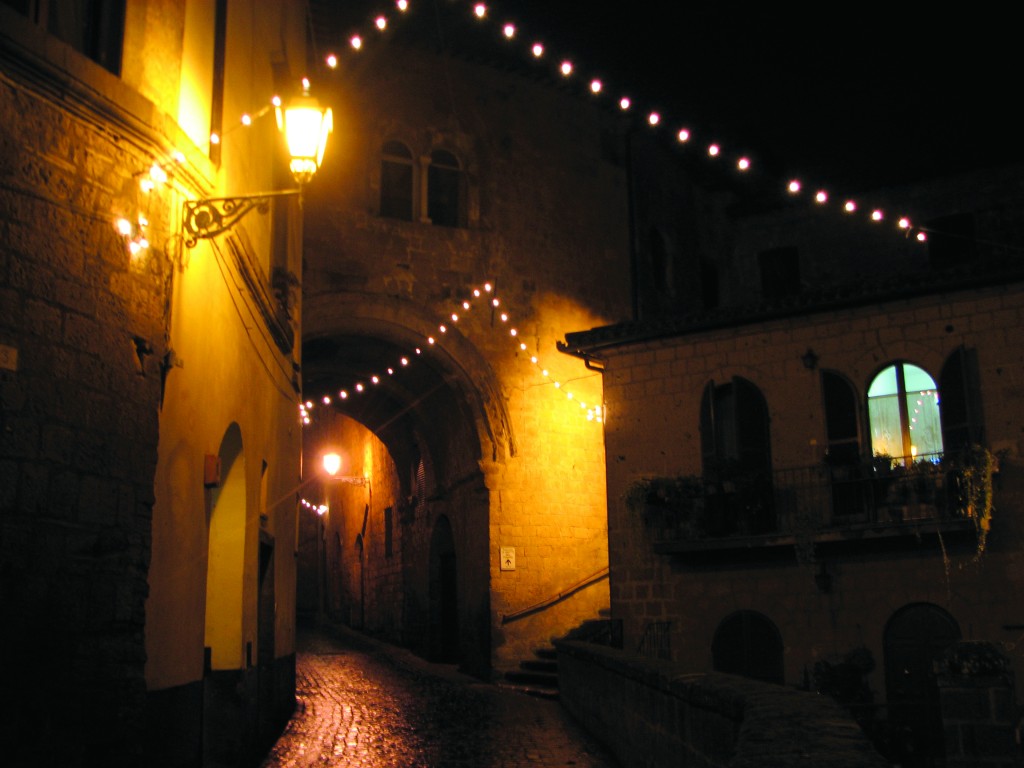
Arriving in Orvieto one dark and chilly Friday evening last December, we didn’t get the full benefit of its commanding position straight away, but wound our way up the seemingly never-ending bends to the town and our hotel.
Tired and hungry, we were thankful to find a cosy trattoria just opposite the hotel and without delay we set about experiencing a taste of Umbria. Within minutes we were enjoying fantastic truffle bruschetta, topped with the dense, newly produced local olive oil.
Umbria is very proud of its food and wine, and justly so. It is home to olive oil, truffles and sausages to name but a few local specialities. Wandering around the medieval centre the following day, we were constantly drawn to shop windows with wild-boar heads peering out at us and masses of local produce on display.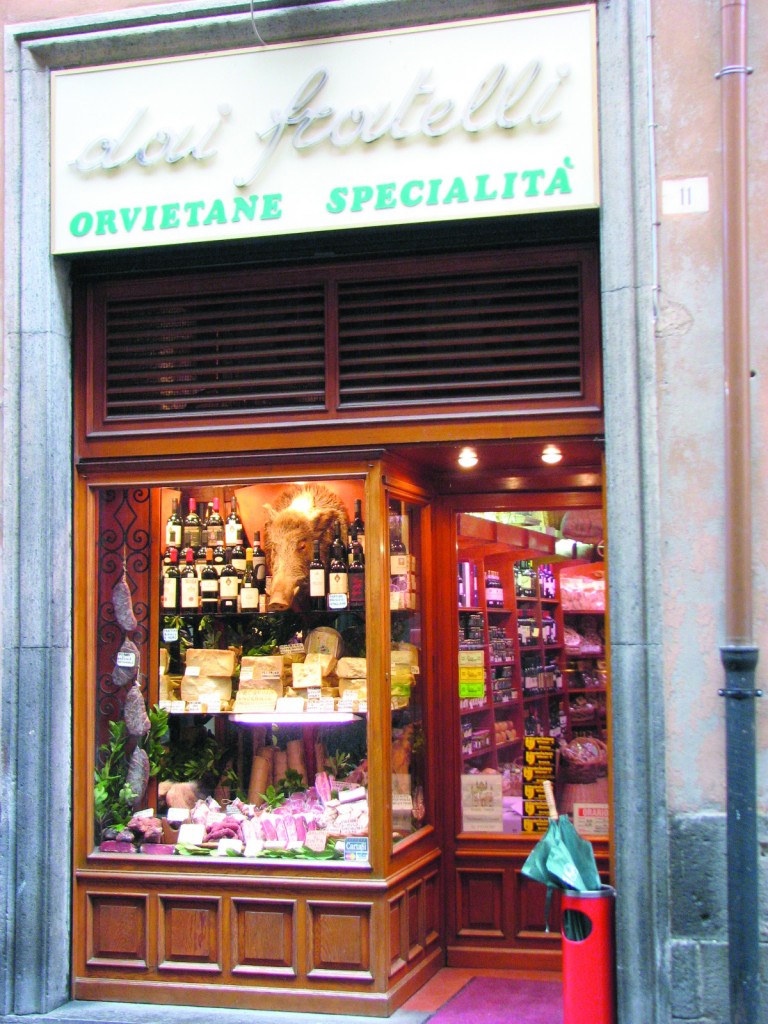
The town centre is compact, but has a confusing lack of linearity; you can wander around the narrow streets for hours without ever being totally sure of where you’ll come out. The buildings give off a golden glow – almost everything is made out of tufa, the local volcanic rock – which brings a feeling of warmth to the medieval palaces and churches, and even though the town’s stunning cathedral gleams white, this too is made of tufa, albeit coated in marble.
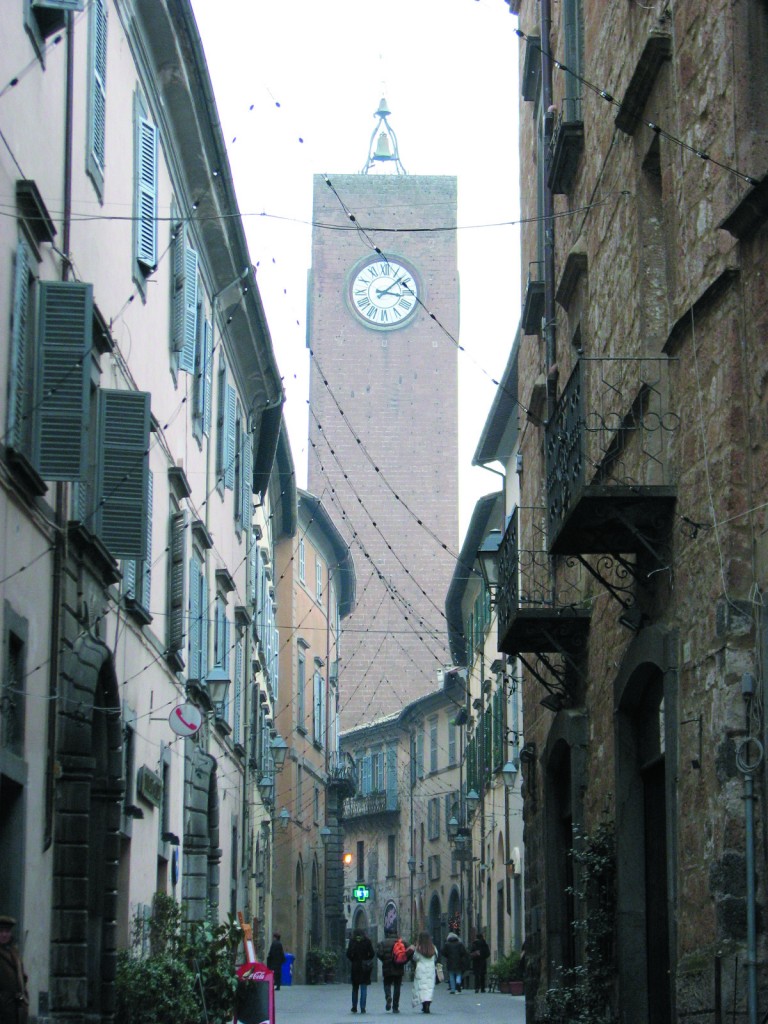
The Cathedral
I was aware that Orvieto’s cathedral is widely considered to be one of the country’s most attractive, but actually seeing the spectacular, tall facade caused me to stand still and gawp. There’s so much intricate detail, and yet it’s tremendously light and graceful, creating an impression of upward surging that echoes the rocky base of Orvieto itself.
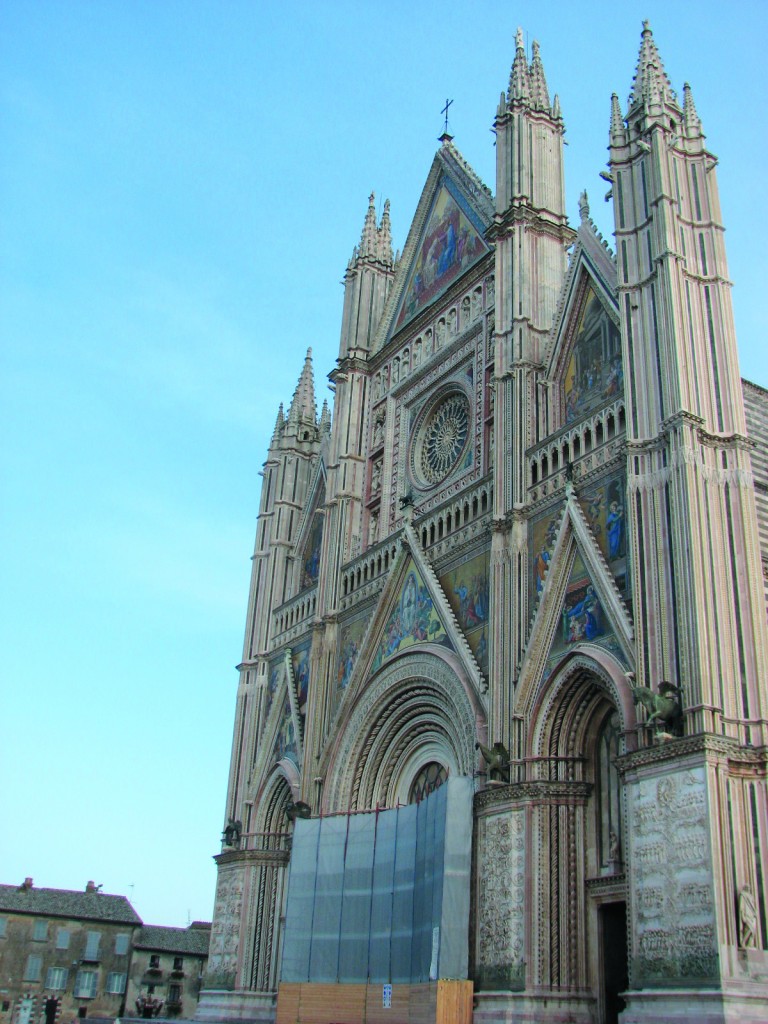
Work on the cathedral began in 1290, following the Corpus Domini miracle at nearby Bolsena nearly 30 years before, when Pope Urban IV ordered a celebratory church to be built in Orvieto. A massive feat, it involved hundreds of workers and took around 300 years to complete.
The operation was run meticulously and an hour keeper was installed in Piazza Duomo to keep a check on the hours worked. Called Maurizio, the bronze statue no longer strikes the time, but he still keeps watch over the town.
After marvelling at the facade, which represents just about all the main aspects of both the Old and New Testaments, we went inside. Black and white stripes line the interior where there are a number of interesting works, but the main feature is the chapel of San Brizio. The work was begun by Beato Angelico in 1447, but having painted just a portion of the ceiling, he was sacked for reasons unknown to this day. Luca Signorelli was the artist taken on to finish the job about 50 years later – and what a job he did! The chapel has to be seen to be believed.
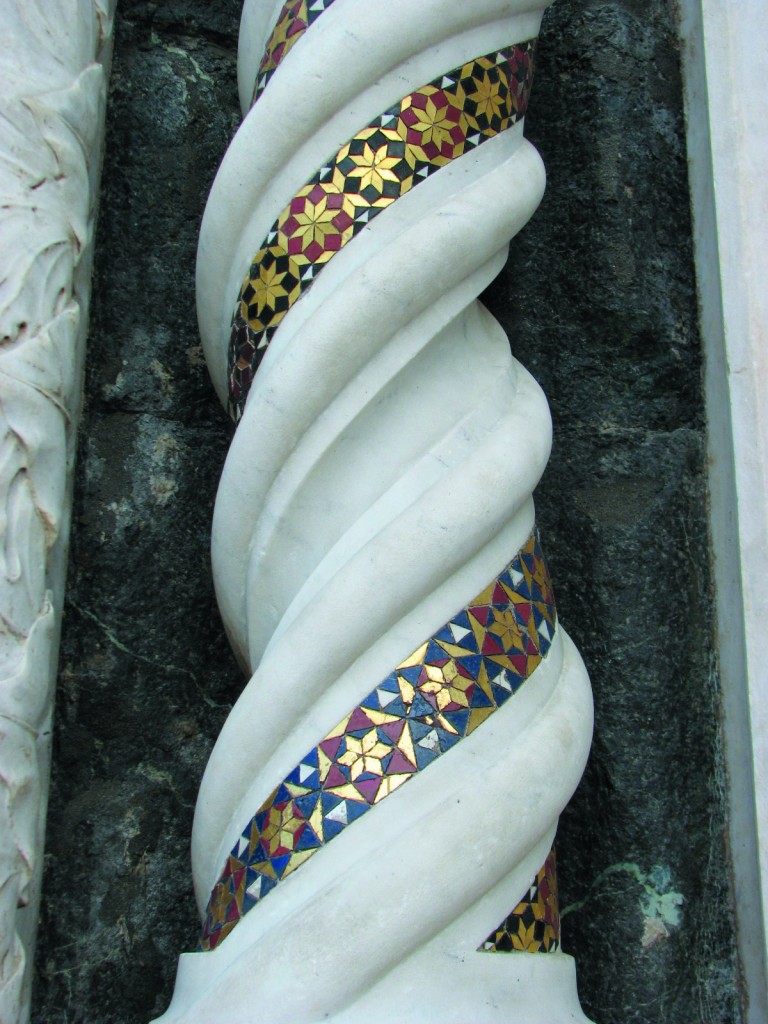
Colourful panels cover the walls featuring fantastic scenes of heaven and hell, some with demons and humans involved in all sorts of grotesque acts. The artist put a lot of himself into it too: apart from his self-portrait alongside his predecessor, Beato Angelico, rumours have it that one lady character being carried away by a demon is a portrait of Signorelli’s mistress, put there after a falling out between the two. The moving deposition of Christ was apparently painted when the artist’s own son died of the plague, and was immortalised here through the eyes and paintbrush of a grieving father.
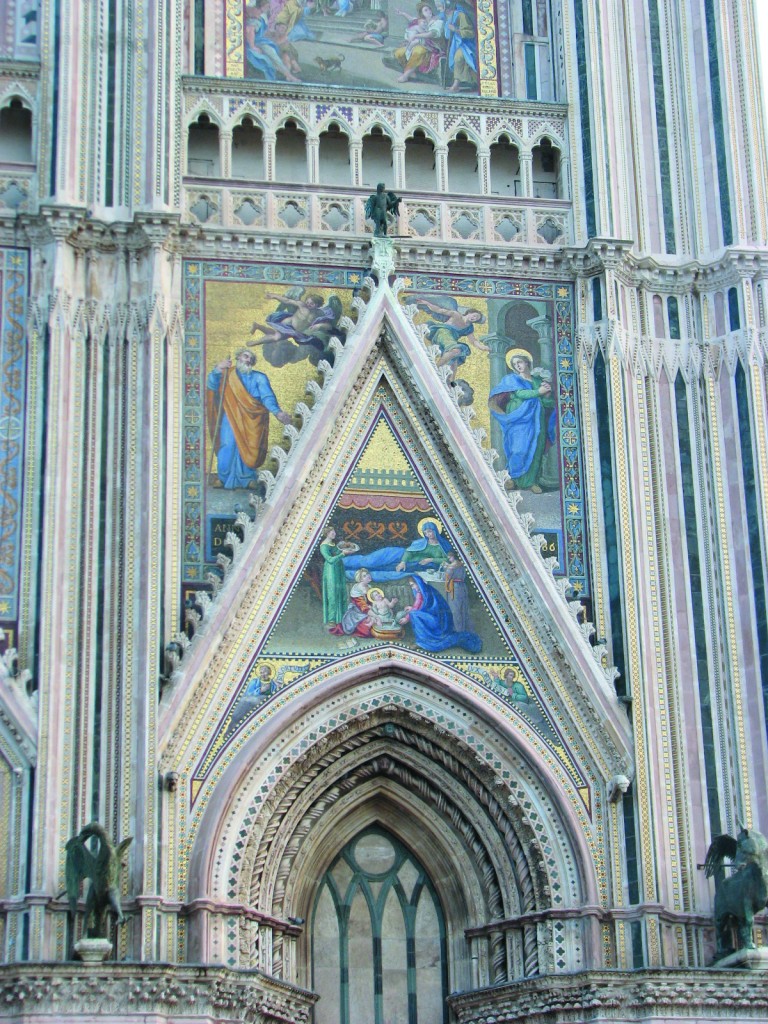
Rest and relaxation
Having seeing so much hellfire and passion, we were about ready to collapse. Luckily we stumbled in the right direction, through the doors of the Cantina Foresi on Piazza Duomo, and regained our strength with a glass or two of Rosso Orvietano – a local red made with a variety of grapes grown in a specific part of the Orvieto area. Vines have grown here for thousands of years and we passed plenty on the road towards Bolsena, when we visited Giampiero Rosati at his agriturismo – Locanda Rosati.
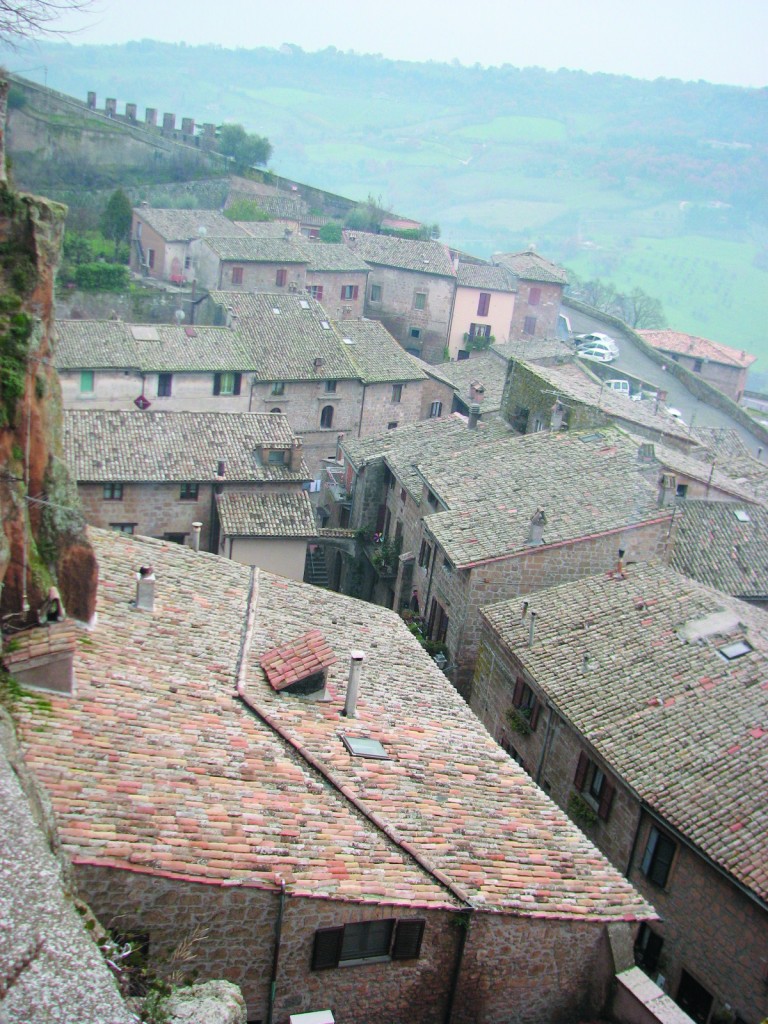
The Rosati family, who have owned their farmhouse for 95 years, don’t make wine themselves, but have a local producer do it for them, while they concentrate on hazelnuts, chestnuts and fruit, and making the place as welcoming as possible for their guests.
The homely atmosphere, as well as Google the sweet fluffy dog, is deeply appealing. Hazelnuts are commonly grown around here and, apart from their value as food, they are particularly sought after as a source of alternative energy – the Locanda Rosati uses a hazelnut shell-burning furnace to heat the house and provide hot water for the family and guests.
The rock
Returning to Orvieto we stopped at the Belvedere layby, created a few years ago to put a stop to the traffic problems caused by motorists pulling up to enjoy the spectacular views over to the town. A light mist added to the atmospheric effect – it looked magical suspended above the clouds. This aspect of being bolstered up on its rock has contributed in many ways to the history and development of Orvieto – ever since the Etruscan’s first made the place their home, when they called it Velzna.
We joined a tour of the caves under Orvieto on the Sunday morning we were there. A tour of the caves below Orvieto is essential for getting to know the place properly. The first full survey of these caves was carried out only just over 20 years ago, in 1985. In total, 1,200 of them have been recorded, dug through the ages partly as quarries for stone to be used in building work, but also for plenty of other purposes. Etruscans first started digging to make wells, so they wouldn’t have to fear droughts if held under siege.
Forty wells have been found, all with exactly the same dimensions (120cm x 80cm). When, in 246 BC, ancient Rome finally managed to conquer Orvieto, the wells were filled in and the population was moved to Bolsena. The Roman rulers had no call for a defensive stronghold and Orvieto was abandoned until the fall of the Empire.
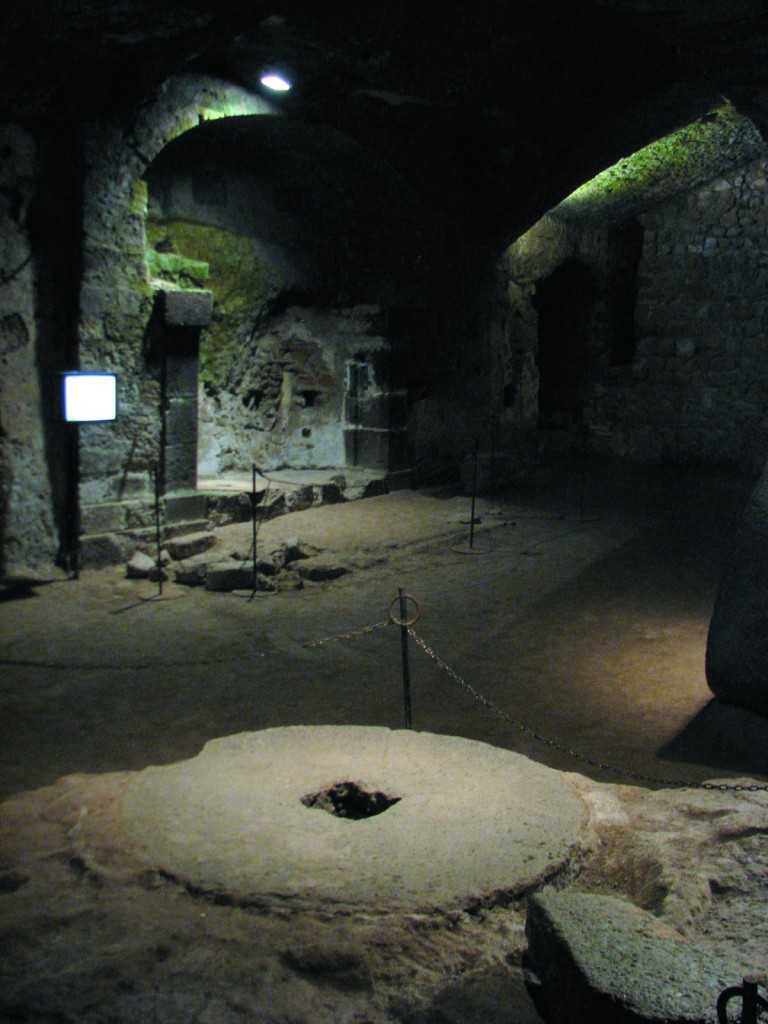
Later residents put the underground areas to a variety of uses and even now most buildings in Orvieto have some kind of underground space. The first we visited was the cave registered as number 536, a former olive mill called Mulino di Santa Chiara. The warmer temperatures down here – as much as 15 degrees C warmer than on the surface during winter – are necessary for the production of olive oil, and there was plenty of room for the donkeys used to turn the wheel to have their stables down here too.
We also saw a ceramics furnace, a wine cellar, and an extensive series of dovecotes. Until 1632, when the practice was banned by Pope Urban VIII, doves were kept by many residents as a ready supply of food at zero cost. Rows of nesting niches line each separate cellar along the edge of Orvieto’s rocky base. The doves had a window so they could fly out during the day and feed themselves in the surrounding countryside, returning at night to sleep, until it was their turn for the pot.
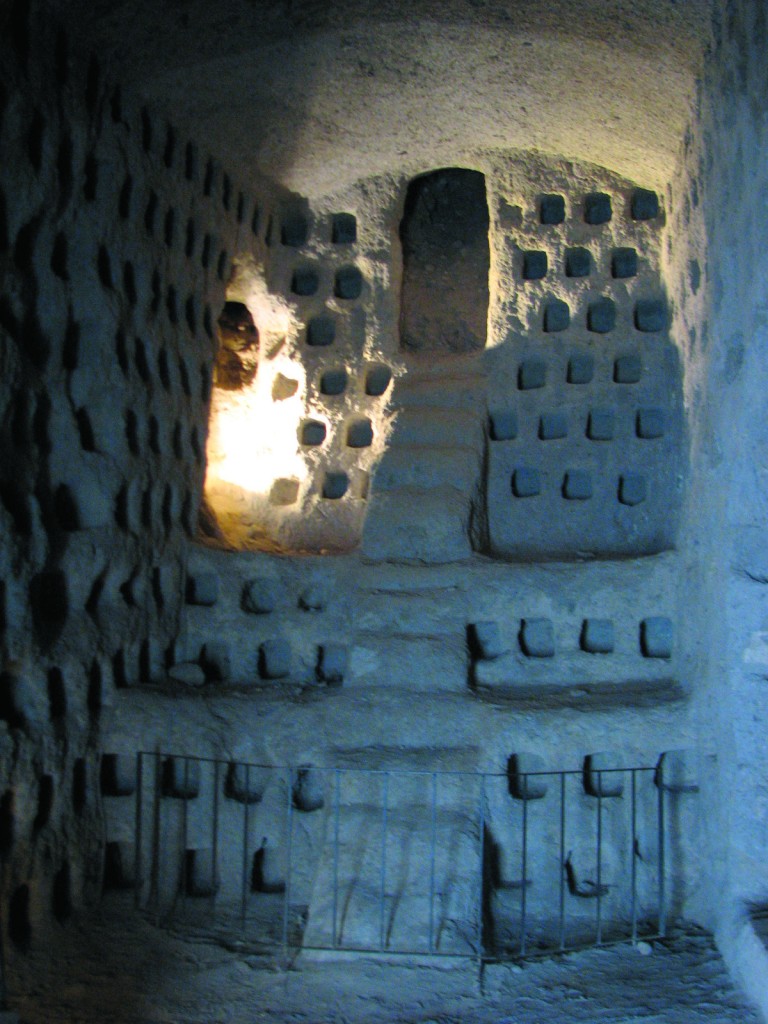
The reason the Pope gave for banning dove keeping was security. At the same time he banned the common practice of throwing waste over the side of the cliff. His explanation was that so much rubbish was accumulating below, enemies with bad intentions would be able to climb up the mountains of it, come in through the dove cotes and invade the town.
Mostly Guelph (supporting the Papacy), Orvieto had a number of wrangles with neighbouring powers through the Middle Ages and the Renaissance, particularly the Tuscan town of Siena. But even within the town itself, things were far from peaceful, in fact Dante Alighieri mentioned Orvieto in his Purgatory, labelling the feuding Monaldeschi and Filippeschi families as even more vicious than Verona’s Montagues and Capulets of Romeo and Juliet fame.
Nowadays, though, Orvieto is a calm and peaceful place. So much so that Adler of the Duca di Orvieto restaurant, who moved here from Rome in search of utter peace and tranquillity, is starting to find the slow pace and silence a bit much. I don’t know – perhaps to live here by the rhythm of the church bells and bird song could get a little hard on the ears, but I’m not so sure. At least after a long weekend it certainly left me wishing I could stay for more.
